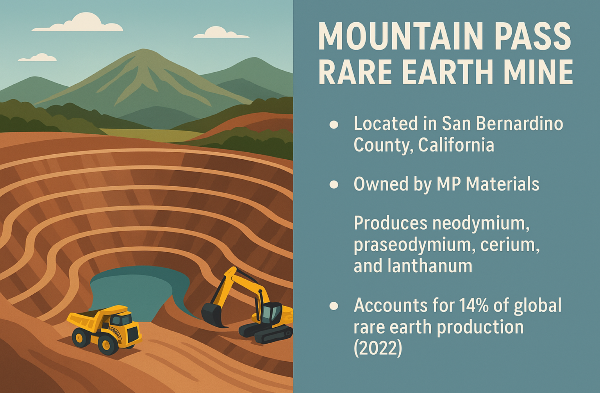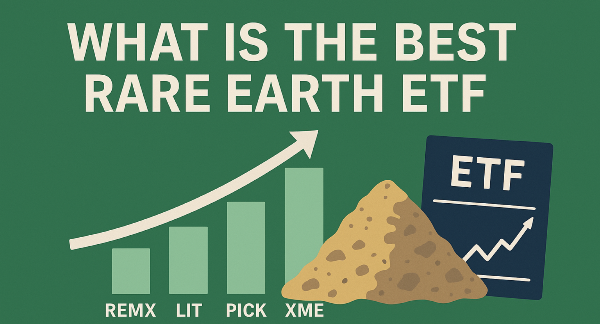Decoding Dividend Payment Schedules: How Often Can You Get Paid?
When you venture into the world of dividend stocks, a fundamental question quickly emerges: how many times a year can you pay dividends as a company, or, more importantly for investors, how often will you actually receive those income payments? Dividends are essentially a portion of a company's profits distributed to its shareholders, serving as a reward for holding the stock. While there's a common perception of regular, fixed payouts, the truth is that companies have significant flexibility in their dividend payment frequency. From the most common quarterly disbursements to more frequent monthly payments, and even less frequent annual or semi-annual payouts, the schedule varies. Additionally, special, one-time dividends and entirely irregular payments also exist. This article will explore the various dividend schedules, what factors influence a company's choice, and the key dates investors need to understand.
Common Dividend Frequencies: From Quarterly to Monthly and Beyond
The most prevalent dividend payment frequency for publicly traded companies, particularly in the United States, is quarterly dividends. This schedule often aligns seamlessly with a company's quarterly earnings reports and appeals to investors who appreciate predictable income streams every three months. For example, many large, established companies like Apple or Johnson & Johnson pay dividends on a quarterly basis. However, for those seeking more consistent cash flow, some companies offer monthly dividends. This is particularly common among real estate investment trusts (REITs) and master limited partnerships (MLPs), designed to appeal to income-focused investors, such as retirees, who rely on regular disbursements. An example could be Realty Income (O). Less common in the US, but sometimes seen in international markets, are semi-annual dividends, paid twice a year. Finally, annual dividends, paid just once a year, are typically found in smaller, less mature companies with potentially less consistent cash flows, or those that prioritize reinvesting profits back into the business over frequent distributions to shareholders.
Beyond Regular Payouts: Special and Irregular Dividends
In addition to the standard, recurring dividend schedules, companies also have the option to distribute special dividends or pay out irregular dividends. A special dividend is a one-time, additional payment to shareholders, usually stemming from an unusual event like a significant asset sale, exceptionally strong one-off profits, or simply having a large surplus of cash on hand. For instance, a company might issue a special dividend after selling off a non-core business unit. These are not part of the company's regular dividend policy and are typically non-recurring. On the other hand, irregular dividends are payments made with no set schedule or predetermined amount. This approach is often adopted by companies with highly volatile earnings, where consistent payouts would be difficult to maintain, or by businesses in their earlier growth stages that distribute profits only when cash flow allows, making their dividend payment frequency unpredictable.
Factors Influencing a Company's Dividend Payment Frequency
The decision of how many times a year a company can pay dividends is not arbitrary; it's a strategic choice influenced by several key factors. Foremost among these is the company's financial health and cash flow. Businesses with stable and predictable cash flows are better positioned to support more frequent payments, like monthly or quarterly dividends, as they can reliably forecast their ability to distribute profits. Conversely, companies with volatile earnings may opt for less frequent or even irregular dividends to avoid committing to payouts they might struggle to meet. The business model and industry norms also play a significant role. Industries with recurring revenue streams, such as real estate (often seen in REITs), might favor monthly dividends, while more mature industries, like established utilities or consumer staples, typically adhere to quarterly schedules, aligning with their quarterly earnings reports. Ultimately, the management's discretion and the Board of Directors' decisions are paramount, as they have the ultimate authority in setting the company's dividend policy, carefully balancing shareholder returns with the crucial need for reinvestment into the business.
Essential Dividend Dates Every Investor Must Know
Regardless of a company's dividend payment frequency, there are four crucial dates every investor needs to understand to ensure they receive their payouts. First is the declaration date, which is when the company's board of directors officially announces the dividend, including its amount, record date, and payment date. Following this is the ex-dividend date, a critical cutoff point for investors. If you purchase shares on or after this date, you will not be eligible to receive the upcoming dividend; the seller retains the right to that payment. Due to recent changes in stock settlement rules (T+1), the ex-dividend date now often falls on the same day as the record date, which is when the company checks its records to identify all shareholders eligible to receive the dividend. Finally, the payment date is the actual day when the dividend is paid out to eligible shareholders. Understanding these dates is vital for strategic trading and ensuring you capture your dividend income.
Conclusion: Flexibility and Due Diligence in Dividend Investing
In summary, the question of how many times a year a company can pay dividends reveals a spectrum of possibilities, from frequent monthly payouts to annual or even irregular distributions. The company's board of directors ultimately determines this schedule, weighing factors like financial stability, industry practices, and investor preferences. The key takeaway for investors is that while common frequencies exist, it's imperative to always research a company's specific dividend payment frequency and its historical payout consistency as part of your comprehensive due diligence. By doing so, you can align your investment choices with your own income needs and financial goals. To deepen your understanding, consider exploring specific dividend-paying companies or delving further into various dividend investing strategies that suit your portfolio objectives.




























Decoding Dividend Payment Schedules: How Often Can You Get Paid?
When you venture into the world of dividend stocks, a fundamental question quickly emerges: how many times a year can you pay dividends as a company, or, more importantly for investors, how often will you actually receive those income payments? Dividends are essentially a portion of a company's profits distributed to its shareholders, serving as a reward for holding the stock. While there's a common perception of regular, fixed payouts, the truth is that companies have significant flexibility in their dividend payment frequency. From the most common quarterly disbursements to more frequent monthly payments, and even less frequent annual or semi-annual payouts, the schedule varies. Additionally, special, one-time dividends and entirely irregular payments also exist. This article will explore the various dividend schedules, what factors influence a company's choice, and the key dates investors need to understand.
Common Dividend Frequencies: From Quarterly to Monthly and Beyond
The most prevalent dividend payment frequency for publicly traded companies, particularly in the United States, is quarterly dividends. This schedule often aligns seamlessly with a company's quarterly earnings reports and appeals to investors who appreciate predictable income streams every three months. For example, many large, established companies like Apple or Johnson & Johnson pay dividends on a quarterly basis. However, for those seeking more consistent cash flow, some companies offer monthly dividends. This is particularly common among real estate investment trusts (REITs) and master limited partnerships (MLPs), designed to appeal to income-focused investors, such as retirees, who rely on regular disbursements. An example could be Realty Income (O). Less common in the US, but sometimes seen in international markets, are semi-annual dividends, paid twice a year. Finally, annual dividends, paid just once a year, are typically found in smaller, less mature companies with potentially less consistent cash flows, or those that prioritize reinvesting profits back into the business over frequent distributions to shareholders.
Beyond Regular Payouts: Special and Irregular Dividends
In addition to the standard, recurring dividend schedules, companies also have the option to distribute special dividends or pay out irregular dividends. A special dividend is a one-time, additional payment to shareholders, usually stemming from an unusual event like a significant asset sale, exceptionally strong one-off profits, or simply having a large surplus of cash on hand. For instance, a company might issue a special dividend after selling off a non-core business unit. These are not part of the company's regular dividend policy and are typically non-recurring. On the other hand, irregular dividends are payments made with no set schedule or predetermined amount. This approach is often adopted by companies with highly volatile earnings, where consistent payouts would be difficult to maintain, or by businesses in their earlier growth stages that distribute profits only when cash flow allows, making their dividend payment frequency unpredictable.
Factors Influencing a Company's Dividend Payment Frequency
The decision of how many times a year a company can pay dividends is not arbitrary; it's a strategic choice influenced by several key factors. Foremost among these is the company's financial health and cash flow. Businesses with stable and predictable cash flows are better positioned to support more frequent payments, like monthly or quarterly dividends, as they can reliably forecast their ability to distribute profits. Conversely, companies with volatile earnings may opt for less frequent or even irregular dividends to avoid committing to payouts they might struggle to meet. The business model and industry norms also play a significant role. Industries with recurring revenue streams, such as real estate (often seen in REITs), might favor monthly dividends, while more mature industries, like established utilities or consumer staples, typically adhere to quarterly schedules, aligning with their quarterly earnings reports. Ultimately, the management's discretion and the Board of Directors' decisions are paramount, as they have the ultimate authority in setting the company's dividend policy, carefully balancing shareholder returns with the crucial need for reinvestment into the business.
Essential Dividend Dates Every Investor Must Know
Regardless of a company's dividend payment frequency, there are four crucial dates every investor needs to understand to ensure they receive their payouts. First is the declaration date, which is when the company's board of directors officially announces the dividend, including its amount, record date, and payment date. Following this is the ex-dividend date, a critical cutoff point for investors. If you purchase shares on or after this date, you will not be eligible to receive the upcoming dividend; the seller retains the right to that payment. Due to recent changes in stock settlement rules (T+1), the ex-dividend date now often falls on the same day as the record date, which is when the company checks its records to identify all shareholders eligible to receive the dividend. Finally, the payment date is the actual day when the dividend is paid out to eligible shareholders. Understanding these dates is vital for strategic trading and ensuring you capture your dividend income.
Conclusion: Flexibility and Due Diligence in Dividend Investing
In summary, the question of how many times a year a company can pay dividends reveals a spectrum of possibilities, from frequent monthly payouts to annual or even irregular distributions. The company's board of directors ultimately determines this schedule, weighing factors like financial stability, industry practices, and investor preferences. The key takeaway for investors is that while common frequencies exist, it's imperative to always research a company's specific dividend payment frequency and its historical payout consistency as part of your comprehensive due diligence. By doing so, you can align your investment choices with your own income needs and financial goals. To deepen your understanding, consider exploring specific dividend-paying companies or delving further into various dividend investing strategies that suit your portfolio objectives.